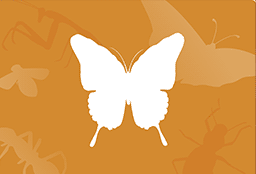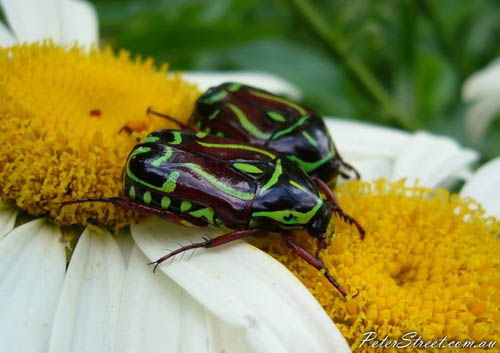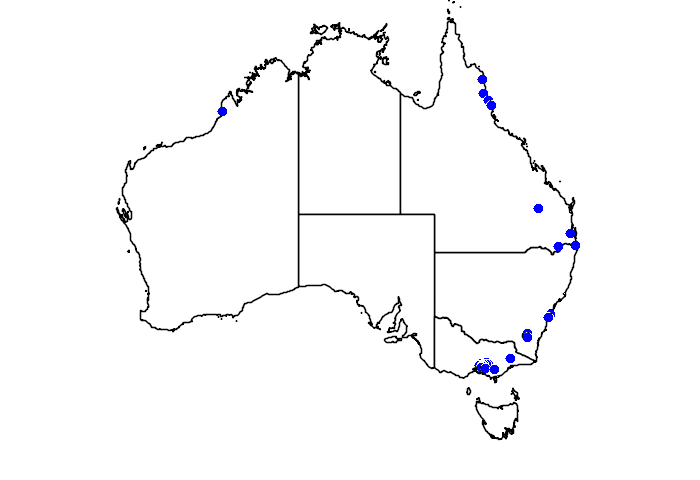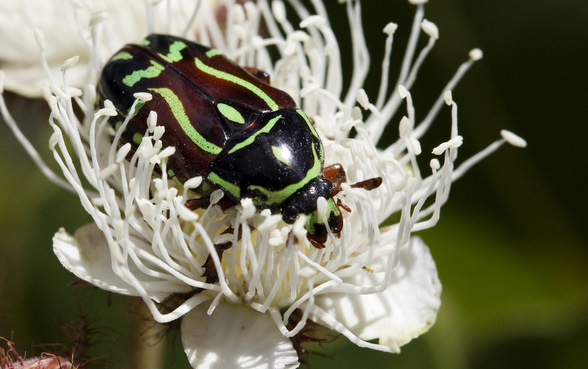Behaviour
Diet
Nectar and pollen from flowers, and occasionally leaves. The larvae (grubs) feed on rotten wood in the soil.
Flight
Strong during the day, moving between trees to feed. It buzzes loudly while flying.
Breeding
Adults emerge from the soil in early summer to mate. The female lays eggs in rotting logs or damp soil under logs. After grubs hatch they live in the soil then build a cocoon made from soil and debris, where they pupate, or transform, into their adult beetle form.
Field Guide
Improve your identification skills. Download your Fiddler Beetle field guide here!





